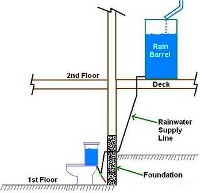 Global warming means droughts, and Americans have experienced plenty of those recently. Here is what you can do to prepare for a long hot summer:
Global warming means droughts, and Americans have experienced plenty of those recently. Here is what you can do to prepare for a long hot summer:
Rain water harvesting is simply diverting the flow from downspouts to a barrel. Devices are available to divert water back to downspouts when the barrel is full. You can collect 0.62 gallons (not 6 gallons as stated earlier – thanks Don for pointing it out) of rainwater from one inch of rain on one sq ft of surface area. For example, Central Ohio averages 37 inches of rain yearly. On 1,000 square feet of roof that’s 22,200 gallons of water per year.
What to use
Industrial food-grade barrels that formerly housed such items as food oil, pickles, etc. — easily can be washed out and cleaned.
“We basically are taking something that would enter the recycle market to be ground up, and taking it out of the stream,” says Chris Luers, of Little Square Farm in Columbus. “We modify them, put a screen on top, valve in front, an outlet fitting and hose to control the flow. It’s a matter of using our resources wisely.”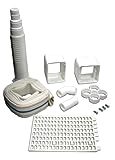
Reasons to harvest rainwater
• It’s a wasted resource.
• It allows you to use “free” water for a variety of tasks.
• Rainwater contains far fewer chemicals than tap water.
• Allowing rainwater to travel through the sewer system adds costs and raises energy required for municipal systems.
* California is in its third year of drought.
* The Colorado River has run low 9 out of the last 10 years.
* By 2050, the Sierra Nevada snowpack is projected to be depleted by at least 25% because of climate change.
* Urban growth has reduced the groundwater feeding Arizona’s San Pedro River by 300%. The river already runs dry in places.
• Hand-water plants.
• Attach a soaker hose to water nearby plants. Tip: Take out the pressure-reducing washer to allow more water flow.
• Keep compost bin moist.
Source: sarasota.extension.ufl.edu
For more information
• Little Square Farm: www.littlesquarefarm.com
• The Rainwater Harvesting Community: www.harvesth2o.com
• To download “Rain Barrels — A Homeowner’s Guide”: sarasota.extension.ufl.edu
GRAY WATER Recycling home wastewater (from laundry, dishes, and bathing) for use in toilets and gardens; works with a home purification system.
LIVING ROOF A waterproofed roof covered by a lightweight growing medium and planted with vegetation; reduces rainfall overflow that’s tost to storm drains.
RAINWATER HARVESTING Using a storage system (generally a storage tank and piping) to collect rain and pipe it to house and garden.
WATER “TIERS” A growing number of water agencies use tiered rates to discourage excessive use. They generally charge the least for a base amount – what you’d typically use indoors, for example. After that, the more water you use, the more expensive it gets.
Plants with low water needs
These superstar natives are tough and versatile, with low water needs and showy flowers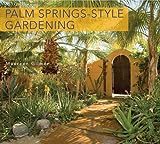
YELLOW BELLS
(Tecoma statu)
Glossy green foliage and large clusters of bright yellow flowers from late spring through early winter make it a showy choice for screening and for big shrub borders. In mild climates, you can prune and train this evergreen shrub, a Southwest native, as a tree to 25 ft. tall. Sunset climate zones 12, 13, 21-24; Hi, H2.
FIRECRACKER PENSTEMON
(Pensttmon eatonii)
It blooms from spring to early summer and tolerates heat. Its red, tubular blooms practically glow when backlit by the sun. Use this desert Southwest native to create a wildflower effect among agaves or grasses. A perennial, it grows 1 to 3 ft. tall. Zones 1-3, 7-13, 18-21.
BEARBERRY
(Arctostaphylos uva-uni)
Low and spreading manzanita makes a great groundcover, forming a mat of small, leathery leaves to 15 ft. wide. Small pink flowers appear in spring, followed by little red fruits that attract birds. Leaves turn red to purplish in winter. Native from Northern California north to Alaska. Zones A1-A3; i-s, 14-24.
WILD ULAC
(Ceanothus)
With flowers in white and shades of blue, this family of plants is versatile (from groundcovers to compact bushes to tall shrubs); it also attracts butterflies. The C. ‘Concha’ (6 to 7 ft. tall; pictured) can tolerate some water in summer. Most varieties are native to California. Zones vary; C. ‘Concha’: zones 6-9, 14-24.
BAIAFAIRYDUSTER
(Calu’andra calif omica)
The shrub attracts hummingbirds with its brilliant red stamens that resemble powder puffs. Use it as an accent in front of a living ocotillo fence or as a backdrop for small blue agaves. Native to Baja California, it’s a favorite with Southwest gardeners and reaches 5 ft. tall. Zones 10-24.
Raleigh harvesting on a grand scale
A federal stimulus loan/grant will be used to harvest rainwater at a dozen locations in the city of Raleigh.
The city has been approved for a loan from the Clean Water State Revolving Fund from proceeds from the American Recovery and Reinvestment Act (ARRA).
The loan request is a partnership of the City of Raleigh, Wake County and The North Carolina State University Water Quality Group. The $465,737 loan will be used for rainwater harvesting systems at nine City of Raleigh fire stations and three Wake County facilities. The loan has a zero-percent interest rate and half the loan will be forgiven.
The rainwater harvesting program will install cisterns at all the facilities and rain gardens at selected facilities. The projects will help address stormwater runoff and water quality concerns in Raleigh and will serve as demonstration and educations sites throughout the community. The NCSU Water Quality Group will assist in the design the facilities and monitor both water quality and the performance of the practices after installation.
This program will improve stormwater quality and reduce stormwater volumes to the drainage system to reduce flooding and erosion issues. The cisterns will provide water conservation benefits by reducing potable water usage. The Fire Department plans to utilize stormwater from the cisterns for washing fire trucks and other equipment and in some cases watering gardens and other landscaping.
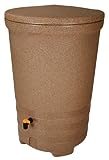
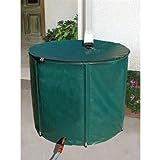
7 Responses
If you’re off the grid I can see a compost toilet being more efficient.
I do see the merits of using rainwater vs. municipally treated water.
“A complex solution to a simple problem.
Far easier to run a compost toilet. No pumps, filters, in fact very little is needed, most especially, no water.”
yeah because the only thing anyone uses water for is to flush the toilet. brilliant.
Great information in this rainwater harvesting article. I would like to add – a great addition to any rain barrel system is to add a diverter to your downspout that connects to your rain barrel(s). This will prevent debris, bugs, and algae from getting in your water.
A complex solution to a simple problem.
Far easier to run a compost toilet. No pumps, filters, in fact very little is needed, most especially, no water.
actually that should be 5000 litres a year I was getting my gallons muddled, why oh why oh why did we ever go metric?
I have only rain water for any water use.
I collect from 81sqm of north facing roof. I use a 1/4mm screen filter to separate leaves and stuff then settle it into a 1000 litre black plastic orange juice container (local farm supplier c.£70). These have screw lids with seals and arrive cleaned and smelling of citrus. I can climb inside them to fit taps as the hole is 12″ dia. but larger persons may need to enlist a friend or willing child. DON’T try this on a hot day unless you want to lose a few gallons of body fluid.
From there it is pumped on demand to 2 more OJ containers about 4.5metres above and runs back to the taps where I filter it to 0.5 micron through ceramic and carbon candles (sterasyl). I should use 5micron sediment filters also but i am slack and penniless but a smarter man would.
The pump is a standard 240V swimming pool pump rated for ‘continuous’ use, I tried cheaper pumps but they burn out very quickly even with low use. The controller I had made by a friend and if my memory serves me right it is a NAND gate device which switches three float switches, top level, lower level and empty.
I use around 1000 litres a year but have just added a shower as after five years I was starting to smell… :-D. I have a washing machine and keep hens and grow plants and have never run out of water in the five years I have lived here, even when 300 people descended on me for a party and flushed 500 litres away in one night.
The Environment agency tell me I shouldn’t drink my water as it hasn’t passed their tests, but I assure anyone thinking of using rain water for drinking that it is fine if filtered, has never affected me even unfiltered, I have drunk it for many more years than just my living here and providing caution and common sense are applied should never be problem.
If you are truly paranoid or just enjoy the aroma of hypochlorite then it possible to buy the necessary chemicals to treat your own water.
The 1″ 1sqft 6gall thing doesn’t sound right to me. I get around 500 litres (110gal/132USgal) from a good downpour off 81sqm (900sqft).
My home relied on rainwater collection and storage alone for many years – it is a great way to learn self control!
I would recommend that 1000 gallons is a minimum useful quantity to store and reinforced concrete tanks are probably the most economic option. They make great supports for climbing roses too. But do be prepared to clean your gutters frequently and to treat the water if it is used for drinking. The yearly clean-out of the tank can be quite an educational event!!! Some varieties of slugs live on the underside of the tank roof and fall off when they die…….
Please note though that 1 inch of rain on 1 square foot of roof does NOT provide 6 gallons of water – it is actually about half a gallon.